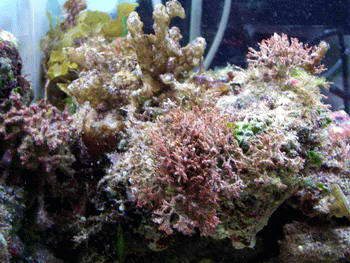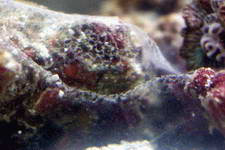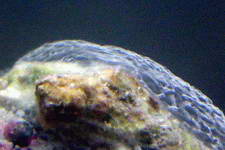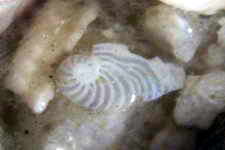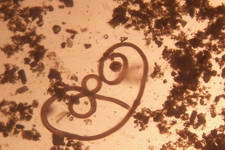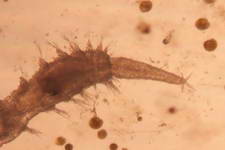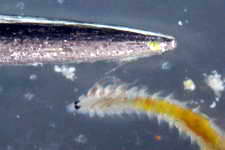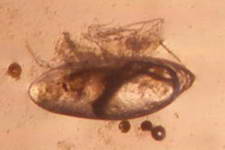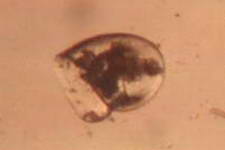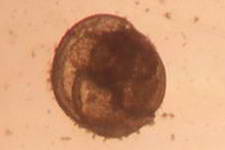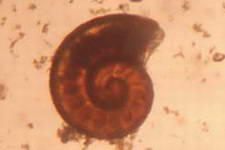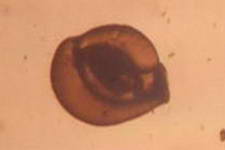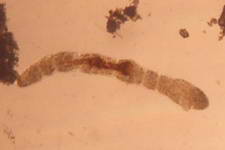CRUSHED CORAL SUBSTRATES
- Since this product is still pushed off onto new hobbyists
and
becomes a constant source of discussion and concern, I am going to try
and save myself from having to constantly address this product by
placing what I know of it within this page, at the least, it will save
me from having to type this same information again and again.
It is extremely common for a new hobbyist when
purchasing
a new setup at a local fish store to be sold crushed coral as a
substrate, only to find out later from other hobbyists who have used
this substrate that they now need to remove the crushed coral and
replace it with some actual sand. I suppose this is not so much the
store's fault as they do need to have a substrate available to include
with new aquarium set ups. Being that the only criteria for a substrate
is one of being nice and white, all of the other important concerns are
not given much thought, if any. Hopefully, both hobbyists and store
establishments will start to realize that within the quest to provide a
proper habitat for our aquatic pets, the substrates provided must be
taken into account also.
As I have yet to hear of a single good reason to use crushed
coral, I can only list what I know of it being a bad choice as follows
-
1 - I can think of no animals other than worms that would use such a
large grained habitat to live in. Any fish that burrow or
sleep in the sand such as most wrasse and goby species will not do well
and most likely will end up with alot of abrasions, which only opens
them up to infections.
2 - Surface area for an aerobic bio filter, Nope, you get less surface
area with crushed coral. Which could be important since only the
surface of the "sand" bed will have enough oxygen to keep a bio filter
going, down in the bed, it will be stagnant, but the grains will still
be large enough that anaerobic bacteria will not be able to perform
their function, In short, a crushed coral bed not only provides less
bio filter, it also denies the benefit of having denitrification occur
deeper down as you would get with actual "sand". In other
words, it sucks at doing what it is claimed to be, which is a
substrate.
3 - Crushed coral is a maintenance pain in the arse, being so
large grained, any and all "crud" can easily get down deep and it just
lays there and rots away into ammonia. Even if there was a worm
population living in the gravel, they would never be able to process
the amounts generated by a normal system. Which means, you have to
either siphon clean the gravel on a regular basis or stir it all up and
allow your filter pads to try and trap it, then you have to constantly
clean the filter pads, and during all of that, you will most likely
still face water quality issues that you need not to by using "real"
sand.
4 - Its just not natural and looks like crap...lol, I have yet to see a
natural habitat that is made up of crushed coral. Its either rock or
sand and/or a combination of the two. Which is why "they" have to
actually MAKE crushed coral, if it was so natural, why is it made and
not just scooped up out of the oceans like other sands are? Yes, there
are blends made to include sea shells, rock fragments and such, but the
only time you are going to see that type of habitat is if you are
standing on a Florida beach in just enough water to get your
ankles wet, not a place you will likely find a reef, or fish for that
matter.
Applications of Sand in Reef Aquaria
- "
It is apparent from the simple
experiments done using sand, sand and calcifying algae, and coral
fragments that the dissolution of carbonate sediments is not adequate
to maintain the calcium or carbonate alkalinity of aquariums housing
even very low numbers of calcifying organisms. "
Besides not taking into account all of the above,
this
product is also touted as providing calcium and pH buffering through it
dissolving slowly in our aquarium water. I find this incredible for the
following reasons -
Calcium carbonate
will not dissolve in
your tank, it could, but I will get to that one single possibility
later... All of what I know of and found about this subject came from
one single page, and if you wish to dig deeper or dont want to believe
me. Here is
THE PAGE.
What is calcium carbonate? Also known as limestone, calcite,
argonite, chalk and marble. - It is not a single item actually but is a
compound ( CaCO3 )
Calcium carbonate shares the typical properties of other
carbonates. Notably:
- it reacts with strong acids, releasing carbon
dioxide:
CaCO3 + 2HCl ? CaCl2 + CO2
+ H2O - it releases carbon
dioxide on heating (to above 825 °C in the case of CaCO3),
to form calcium oxide, commonly called burnt lime:
CaCO3 ? CaO + CO2
Calcium carbonate will react with water that is
saturated with
carbon dioxide (CO2) to form the soluble calcium bicarbonate.
- CaCO3 + CO2
+ H2O ? Ca(HCO3)2
Note the above where it states THE SOLUBLE
calcium BIcarbonate,
this is where we get the buffering effect to stabalize our
pH.
Also note that it takes an acid (very low pH) to effect this
reaction. NOT something that is going to happen in our tanks
with
one possible exception. For those of us who use a deep sand bed there
are bacterial processes taking place that do produce acids, those acid
in such a low flow area can drop the pH level low enough to start
releasing calcium bicarbonate (dissolving argonite based sands) but it
will not be enough for you to be able to detect any benefit from it
doing so. So to say that such sands can buffer your aqurium water is
misleading and incorrect. If this myth was true, there would be no
reason to use calcium reactors that force the dissolution of calcium
carbonate based media through the use of CO2 injection.



